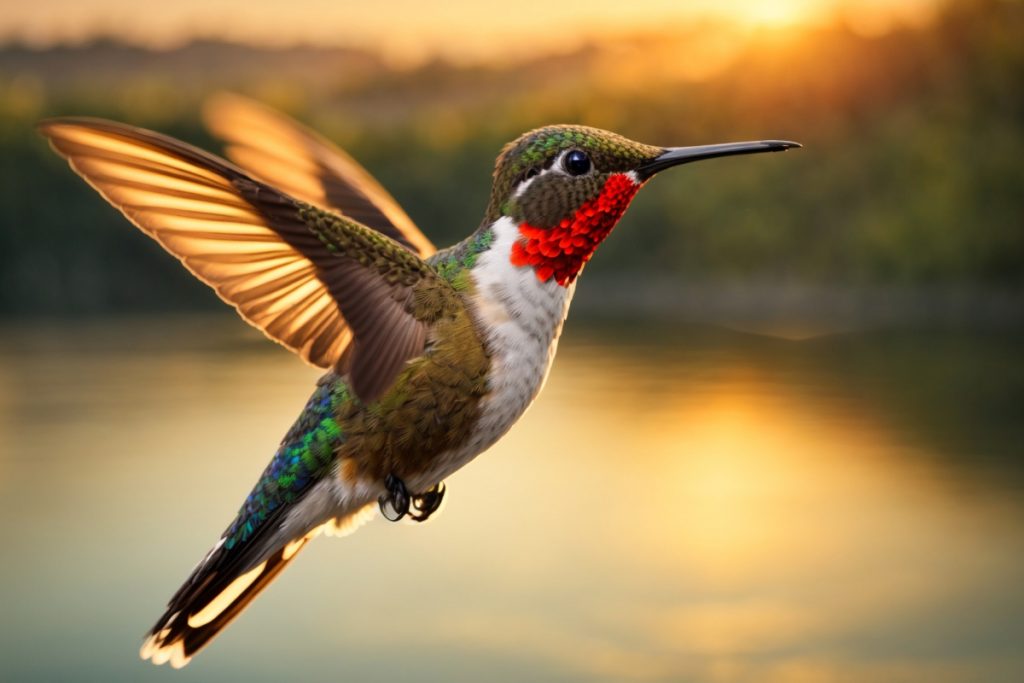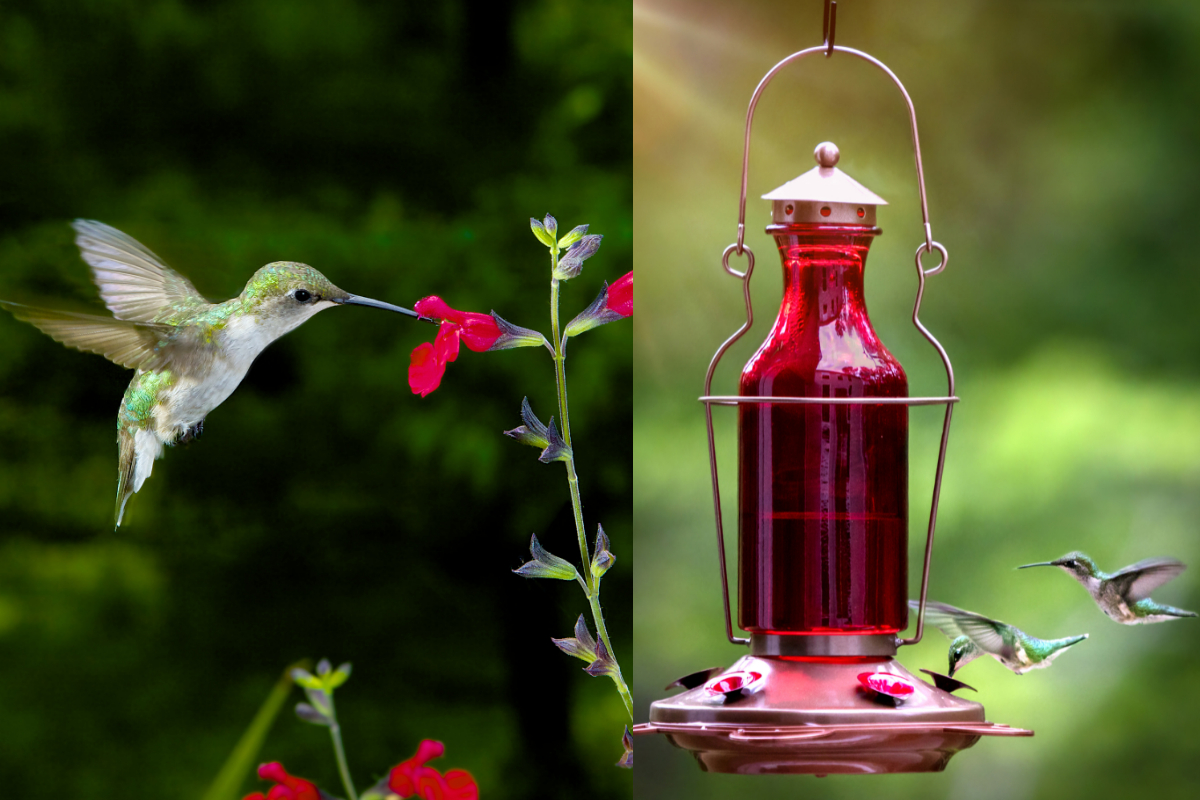Quick Answer:
Ruby-throated hummingbirds, Wisconsin’s primary hummingbird species, typically begin leaving Wisconsin in late August to early September. Adult males usually depart first (mid to late August), followed by adult females and juveniles through mid-September. Peak migration occurs during the first two weeks of September, though some stragglers may remain until early October, depending on weather conditions and food availability.
Wisconsin’s hummingbird migration patterns have fascinated birdwatchers and nature enthusiasts for decades. Understanding when these tiny aerial acrobats depart the state is crucial for anyone wanting to witness their remarkable journey or ensure their feeders remain available during critical migration periods.
In this comprehensive guide, we’ll explore the timing, factors, and fascinating details surrounding hummingbird departure from Wisconsin, providing essential information for both casual observers and dedicated birders.
Key Takeaways
- Ruby-throated hummingbirds are Wisconsin’s predominant species, with males leaving first in late August.
- Peak migration occurs during the first two weeks of September across Wisconsin.
- Weather patterns, food availability, and daylight hours influence departure timing
- Adult males typically depart 2-3 weeks before females and juveniles
- Some hummingbirds may linger until early October in favourable conditions
- Keeping feeders up through September supports migrating birds from northern regions.

Ruby-Throated Hummingbirds: Wisconsin’s Primary Species
The ruby-throated hummingbird (Archilochus colubris) represents virtually all hummingbird activity in Wisconsin. These remarkable birds arrive in Wisconsin during late April to early May and establish territories throughout the state’s diverse habitats. Understanding their behaviour patterns provides insight into their departure timing, which follows similar hummingbird migration patterns observed across the Great Lakes region.
Adult males establish territories upon arrival and begin their southward journey earliest, typically starting their migration in mid to late August. This early departure coincides with their completion of breeding responsibilities and the need to secure optimal wintering grounds in Central America.
Female ruby-throated hummingbirds assume complete responsibility for nest construction, incubation, and chick rearing. Their later departure, usually beginning in early September, allows them to complete their parental duties before undertaking the arduous journey south.
Migration Timeline: When Wisconsin Hummingbirds Depart

Late August: Male Departure Phase
Adult male hummingbirds typically begin their departure from Wisconsin during the third and fourth weeks of August. These early migrants often represent the first wave of hummingbird migration, with peak male departure occurring around August 20-30. Males leave first because they play no role in chick rearing after mating, allowing them to focus entirely on building energy reserves for migration.
Early September: Female and Juvenile Migration
Female hummingbirds and their offspring typically begin departing Wisconsin during the first week of September. This timing allows females to complete their final brood of the season while ensuring adequate time for juvenile birds to develop sufficient flight strength for the long journey ahead. Understanding how long hummingbirds take to find feeders helps explain why maintaining feeding stations during this period is crucial.
Mid-September: Peak Migration Period
The period from September 1-15 represents peak hummingbird migration through Wisconsin. During this time, local Wisconsin birds combine with migrants from northern regions of Minnesota, Ontario, and Manitoba, creating the highest concentrations of hummingbirds observed throughout the year.
Late September to Early October: Stragglers and Northern Migrants
Some hummingbirds may remain in Wisconsin through late September and occasionally into early October. These late-season birds often include juveniles building strength for migration or individuals from far northern regions passing through Wisconsin on their southward journey.
Related Posts:
- When Do Hummingbirds Leave Ohio? – Discover the migration timing for hummingbirds in neighbouring Ohio and compare departure patterns across the Great Lakes region.
- How Long Does It Take Hummingbirds to Find a Feeder? – Learn optimal timing for setting up feeders to support both resident and migrating hummingbirds during Wisconsin’s migration season.
Factors Influencing Departure Timing
Weather Patterns and Climate Conditions
Weather patterns significantly influence hummingbird departure timing from Wisconsin. Favourable conditions, including warm temperatures, light winds, and high-pressure systems, encourage migration, while adverse weather, such as storms, cold fronts, or persistent rain, can delay departure by several days or even weeks.
Temperature drops below 50°F (10°C) for extended periods typically trigger increased migration activity, as hummingbirds instinctively recognise these conditions as signals of approaching autumn.
Food Availability and Natural Resources

Nectar availability from native flowering plants directly impacts departure timing. Years with abundant late-blooming flowers such as cardinal flower, bee balm, and jewelweed may extend hummingbird presence in Wisconsin. Conversely, drought conditions or early frost that reduce natural food sources can accelerate departure.
Insect populations also influence migration timing, as hummingbirds require protein from small insects and spiders to fuel their journey. Abundant insect populations can support extended stays, while reduced insect activity may prompt earlier departure.
Daylight Hours and Photoperiod
Decreasing daylight hours serve as a primary biological trigger for hummingbird migration. As days shorten in late summer, hummingbirds’ internal biological clocks activate migration instincts, regardless of current weather conditions or food availability.
This photoperiod response ensures that hummingbirds begin their journey with sufficient time to reach wintering grounds before harsh winter conditions arrive in their breeding territories.
Regional Variations Across Wisconsin
Northern Wisconsin Departure Patterns
Northern Wisconsin regions including the Northwoods and areas near Lake Superior typically experience earlier hummingbird departures than southern portions of the state. The shorter growing season and earlier onset of autumn conditions in northern regions often result in migration beginning earlier than in southern Wisconsin, though specific timing differences require further regional study.
Southern Wisconsin Migration Timing
Southern Wisconsin areas including the Driftless Region and areas near the Illinois border often retain hummingbirds longer into September. The extended growing season and milder autumn conditions in these regions can support hummingbird populations well into the third week of September.
Coastal Influences Along Lake Michigan
Wisconsin’s Lake Michigan shoreline creates unique microclimate conditions that may influence hummingbird departure timing. The lake’s moderating effect on temperature can potentially extend the blooming period of coastal plants, though specific studies on these effects would benefit our understanding of regional migration patterns.
Supporting Migrating Hummingbirds
Feeder Maintenance Through Migration Season
Maintaining hummingbird feeders throughout September and into early October provides crucial support for both local departing birds and migrants passing through Wisconsin from northern regions. This extended feeding period can be particularly important during years with poor natural nectar sources. Proper hummingbird feeder maintenance becomes even more critical during migration season to prevent disease transmission among concentrated bird populations.
Fresh nectar should be provided every 3-4 days during migration season, with more frequent changes during hot weather to prevent fermentation and spoilage.

Native Plant Gardens for Migration Support
Native flowering plants that attract hummingbirds that bloom through September provide natural nectar sources during peak migration periods. Plants such as New England aster, goldenrod species, and late-blooming cardinal flower create valuable habitat for migrating hummingbirds.
These native plants also attract insects that provide essential protein sources for hummingbirds preparing for their long journey to Central America.
The Journey Ahead: Migration Routes and Destinations
Gulf Coast Migration Route
Wisconsin’s ruby-throated hummingbirds typically follow the Mississippi River flyway southward, eventually reaching the Gulf Coast of Texas and Louisiana. Many individuals make the remarkable 500-mile non-stop flight across the Gulf of Mexico to reach wintering grounds in Mexico and Central America.
This incredible journey requires hummingbirds to nearly double their body weight with fat reserves before attempting the Gulf crossing, highlighting the importance of adequate food resources during migration preparation.
Wintering Destinations
Wisconsin hummingbirds spend their winter months in regions ranging from Mexico through Central America, with some individuals reaching as far south as Panama. These tropical and subtropical regions provide abundant flowering plants and insects necessary for survival during North America’s winter months.
The remarkable navigation abilities of these tiny birds allow them to return to the same breeding territories in Wisconsin year after year, often arriving within days of their previous year’s arrival date.
Conservation Considerations

Climate Change Impacts on Migration
Climate change effects on migration timing present both challenges and opportunities for Wisconsin hummingbirds. Warmer autumn temperatures may delay departure, while altered precipitation patterns can affect food availability during critical migration preparation periods.
Research suggests that some hummingbird populations are adjusting their migration timing in response to changing climatic conditions, though the long-term implications of these shifts remain under study.
Habitat Conservation Efforts
Habitat preservation throughout Wisconsin directly supports healthy hummingbird populations and successful migration. Protecting native plant communities, reducing pesticide use, and maintaining diverse flowering plant communities benefits both breeding and migrating hummingbirds.
Citizen science projects and migration monitoring programs help researchers track population trends and migration timing changes, contributing valuable data for conservation planning.
Conclusion
Understanding when hummingbirds leave Wisconsin enhances appreciation for these remarkable birds and supports conservation efforts throughout their annual cycle. The timing of their departure, from late August through early October, reflects millions of years of evolutionary adaptation to seasonal changes and available resources.
By maintaining feeders through September, planting native flowering species, and supporting habitat conservation, Wisconsin residents can play a vital role in ensuring successful hummingbird migrations for future generations. The annual departure of these tiny jewels serves as a poignant reminder of the intricate connections between seasons, habitats, and the remarkable wildlife that enriches Wisconsin’s natural heritage.
Frequently Asked Questions (FAQ)
Q: Should I take down my hummingbird feeders when I stop seeing hummingbirds?
A: No, continue maintaining feeders through September and into early October. While your local hummingbirds may have departed, migrants from northern regions often pass through Wisconsin during this period and benefit greatly from available food sources.
Q: Do hummingbirds migrate in flocks or individually?
A: Hummingbirds migrate individually, not in flocks. While you may see multiple hummingbirds at feeders during migration, each bird is following its own internal schedule and route rather than travelling in coordinated groups.
Q: What happens if a hummingbird doesn’t leave Wisconsin before winter?
A: Hummingbirds cannot survive Wisconsin winters due to lack of food sources and their inability to enter true hibernation. Any hummingbird remaining past October likely faces mortality unless it resumes migration quickly.
Q: How do hummingbirds know when to start migrating?
A: Decreasing daylight hours serve as the primary trigger for migration, combined with instinctual responses to temperature changes and food availability. This biological programming ensures migration begins with adequate time to reach wintering grounds.
Q: Can I help a hummingbird that seems too weak to migrate?
A: Contact licensed wildlife rehabilitators immediately if you observe a hummingbird that appears unable to fly or behaves abnormally. Attempting to care for hummingbirds without proper training and permits is illegal and often harmful.
Q: Do the same hummingbirds return to Wisconsin each year?
A: Many hummingbirds return to the same general area where they successfully bred the previous year. However, annual mortality rates and the challenges of migration mean that the specific individuals may vary from year to year.
Q: How fast do hummingbirds fly during migration?
A: Hummingbirds typically fly 20-25 mph during migration, though they can reach speeds up to 30 mph with favourable wind conditions. Their small size actually provides advantages in terms of energy efficiency over long distances.
Q: What’s the latest date hummingbirds have been seen in Wisconsin?
A: Late October sightings are occasionally reported, though most represent either misidentified birds or individuals that may not survive the approaching winter. Verified November sightings of ruby-throated hummingbirds are extremely rare in Wisconsin, though other species such as Rufous hummingbirds are occasionally observed during late fall.
Q: How far can hummingbirds fly in a single day during migration?
A: Hummingbirds can travel 300-500 miles in a single day under optimal conditions, though 200-300 miles is more typical. Their ability to make the 500-mile Gulf of Mexico crossing demonstrates their remarkable endurance capabilities.
Q: Do juvenile hummingbirds migrate differently than adults?
A: Juvenile hummingbirds migrate using inherited navigation abilities rather than learned routes. They typically depart slightly later than adults, allowing additional time to develop flight strength and navigation skills before undertaking their first migration journey.
Until next time, thanks for reading.
External Sources to Read More:
- Journey North – Comprehensive data on ruby-throated hummingbird migration patterns, including specific timing of male vs. female departures
https://journeynorth.org/tm/humm/aug_males_depart2.html - The Wilson Bulletin (1988) – Scientific study documenting fall migration timing, showing males depart by late August and 90% of all migration concludes by mid-September
https://digitalcommons.usf.edu/cgi/viewcontent.cgi?article=9345&context=wilson_bulletin - Wisconsin eBird – Expert information from Wisconsin hummingbird banders about migration timing and late-season hummingbird observations
https://ebird.org/region/US-WI/post/late-season-hummingbirds-in-wisconsin.
